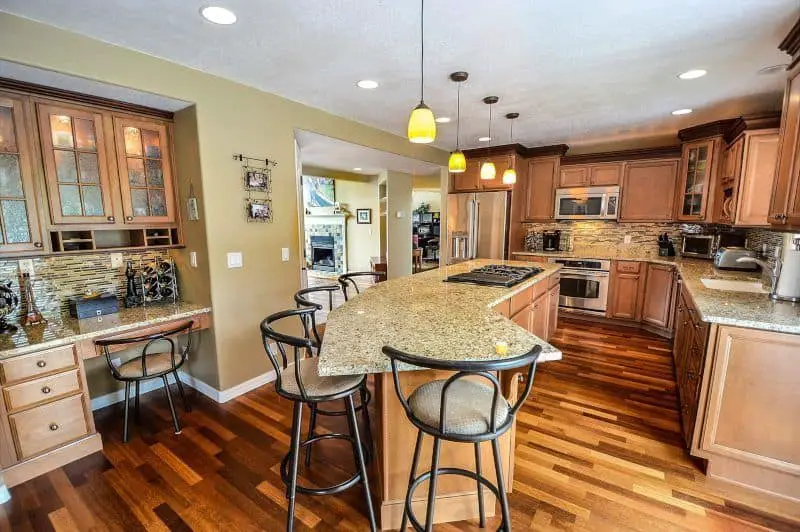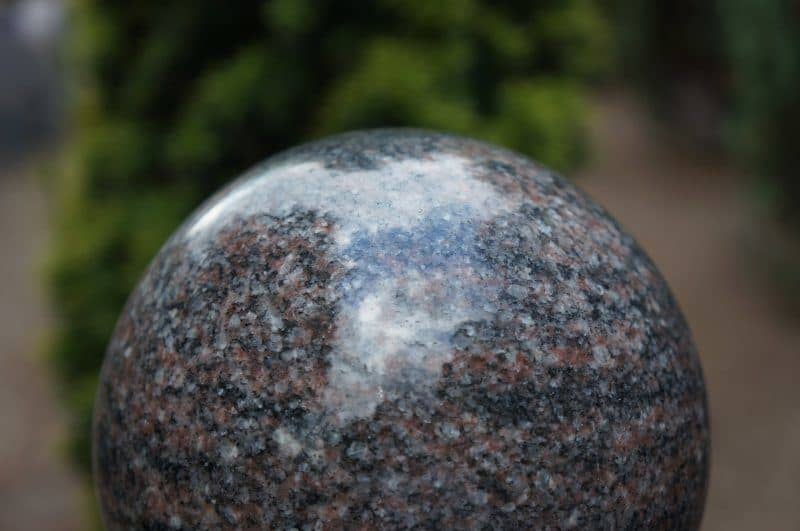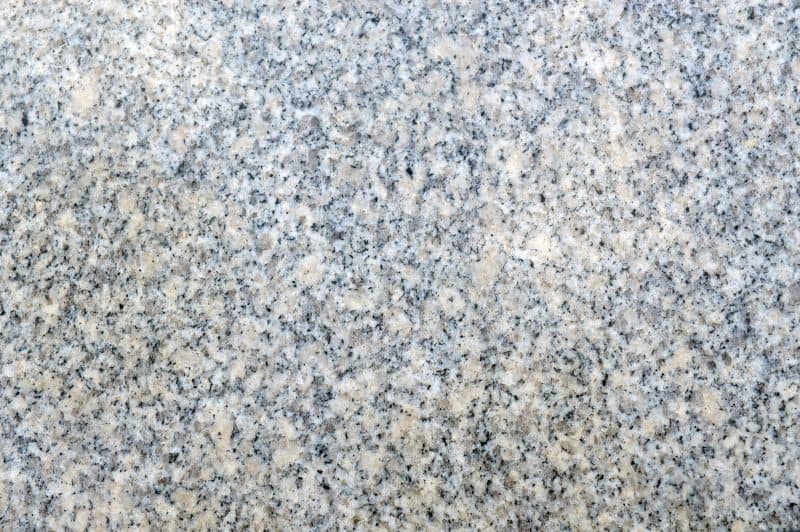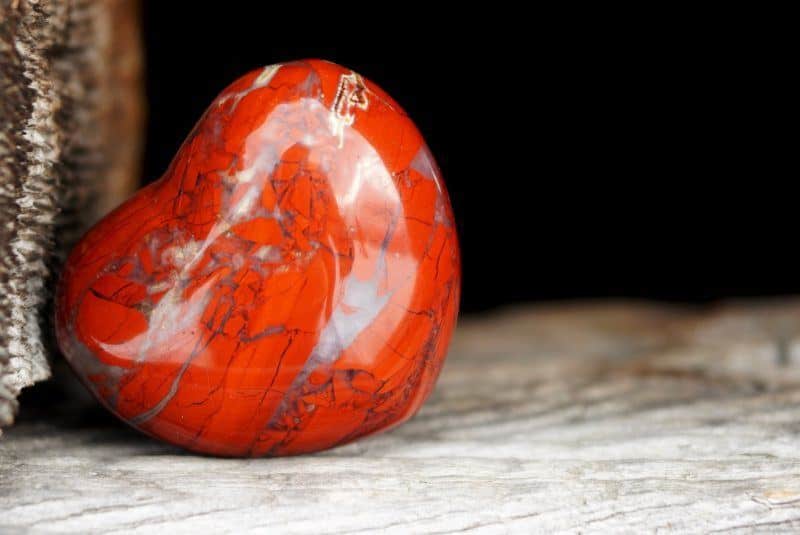Your kitchen is a place of pride. It showcases how clean and tidy you are as a homeowner. When visitors come to your home and enter the kitchen, your granite counter will be the first thing they’ll notice.

Granite countertops can make a kitchen look very elegant. They are very durable and do not need a lot of maintenance. However, they look luxurious and attractive only when they are clean and shiny.
Over time, the residue from oil, grease, soap, and dirt can build up on the surface of your granite countertops. Acidic substances can cause etching on the granite surface. These can cause your granite counter to look faded and dull.
Luckily, there is no need for you to call a professional team to revive your granite. You can do it on your own as a DIY project. By following a few simple steps, you can have your countertops looking stunning and brand new.
Table of Contents
Cleaning Granite Countertops
It is important that you keep your granite countertops clean at all times. Before you start polishing, you should ensure that all spills, stains, and stubborn crumbs have been removed from the surface.
Take care never to use any harsh cleaning agents or chemicals. Although granite is a tough and durable material, it must be treated gently. Avoid any cleaning products containing vinegar, lime, lemon, bleach, and ammonia and also avoid using glass cleaners. These chemicals can erode the sealant and over time, damage the granite.
With a microfiber cloth or a terry towel, remove all the soapy water and then dry the countertops thoroughly. Do not hurry through the drying. Otherwise, the polishing application you will do after may not work as effectively as it should. Also, drying the granite surface properly prevents any streaking.
Your countertops may be dull because of soap build-up. You could make use of a soap film remover or a combination of mineral build-up and soap film remover to restore the shine. If this does not work, then your granite countertops may require a good polishing to get back their shine.
Polishing Granite Countertops
There was a number of ways and products that you can use on your granite counters. Both household and professional products. Let's take a look at a few options:

Buying Granite Polish
There are many types of countertop polish that you can buy from your local home improvement store. However, the key thing to remember is to get a brand that is specially made for polishing granite.
Using a general-purpose polishing product that contains acid can damage your surface permanently. In fact, you should avoid using any cleaner or polish that contains vinegar, lime, lemon, bleach, or ammonia. They can harm the granite sealant and cause stains and other damage. There are both wet and dry granite polishes available.
Granite Polishing Powder
If your granite countertop is dull because of superficial scratches and light etching on the surface, then you may be able to clean and remove these with a granite polishing powder. The polishing powder is abrasive and can remove stains, shallow scratches, and other residues that may cause your counter to look dull. Mix the polishing powder with water to make a paste. Work the paste well into the granite using a felt pad or burlap.
However, the polishing powder may not work as effectively on all granite surfaces. It is a good idea to check the manufacturer’s instructions to confirm if you can use polishing powder on your counter.
Some types of polishes are meant specifically for dark or light granite. So, ensure that you select the best option for your countertop. Sometimes, only trial and error will help you find out which type of granite polish is the best for you.
Using Your Own Granite Polish
You also have the option of making your own granite polish at home using ingredients that you already have. While there are several recipes to make your own polish, the one thing that you should ensure is that it should not be too acidic.
Take three cups of warm water and add 1/4 cup of baking soda. Mix both ingredients and apply the homemade polishing solution using a soft cloth. Buff the countertops using another cloth. Once you have finished buffing, use warm water and a damp cloth to clean and remove any excess polish.
Using Power Tools
If you want a quicker method, you can use a power polisher. This is a good investment to make, especially if you plan to keep your granite countertop for decades to come. It may be difficult to indulge in strenuous polishing as you age. However, you should be careful when using a power polisher.
The surface of your granite countertop or the sealer can be damaged if you exert too much pressure while polishing with a power polisher. So, before you attempt to polish using a power polisher, it is a good idea to check with a professional.
Other Granite Cleaning Solutions
Using Acetone
If the granite countertops near your sink or stove are starting to look dull, then the culprit may be soap scum, oil, grease, or some other residue that is spoiling the surface. It may not be sufficient to clean with just water and regular detergent to breakdown and remove the film. Apply acetone using a soft cloth on the dull areas.
Acetone is an effective solvent and helps dissolve thick and greasy stains. Once you scrub the countertop with acetone, rinse clean with warm water.

Resealing Your Granite Countertops
If the sealer coat of your countertop becomes etched, then this can cause your countertop to become dull. If the surface of the granite below is in good condition, the granite can be repaired by resealing it. Ensure that you use a high-quality granite sealer that is recommended by the manufacturer or the installer of your countertops.
Before applying the granite sealer, clean the surface properly and then use a spray bottle or a rag to apply the sealer and ensure that you cover the surface uniformly. Once the countertop sealant has completely dried, you can apply up to three additional coats to ensure that you get the best protection for your granite countertop. By resealing the countertop every year, you can renew the protective coating and prevent fading.
Refinishing Your Granite Countertops
If your granite countertop is faded badly, then it is likely to have been affected by etching due to exposure to acidic substances. In this case, the faded areas must need finishing and polishing again in order to remove the etched surface. Since granite is very hard, it needs specialized equipment such as a stone polisher or a grinder. So, it may be a good idea to hire a professional to take care of this for you.
Tips for Preserving Your Granite Countertops

With proper maintenance and care, your granite countertop is sure to be beautiful and shiny for several decades to come. Apart from cleaning them regularly after every meal preparation, when they start becoming dull, a good polishing will get them restored in a jiffy. Now, you’re all set to show off your shiny granite countertops!
